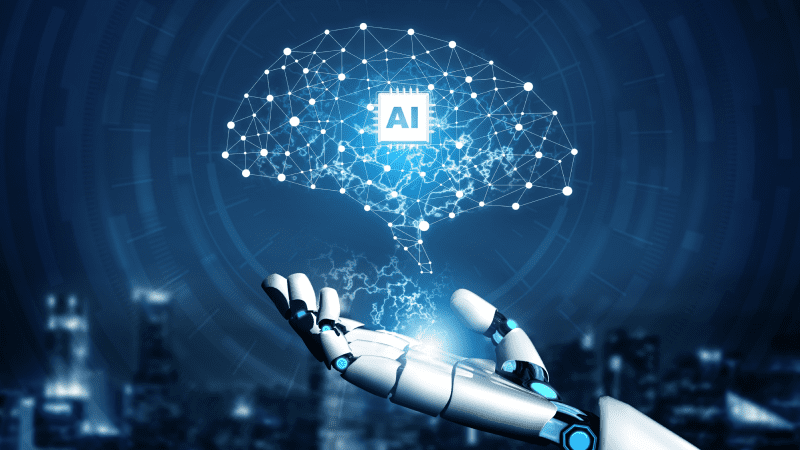
Digital Growth vs. Environmental Stewardship
Insights from the UNCTAD Report (Part 1/2)
This month, The UN Commission for Trade and Development released its report on the Digital Economy.
Centre for Trustworthy Technology

“I think this is a natural evolution from a platform centric economy to a network centric economy.”
“We were inspired by the Internet. The Internet is not a platform. It is a network. Similarly our telecommunication system is a network not a platform. Our e-mail ecosystem is a network not a platform.”
Dr. Pramod Varma, CTO EkStep Foundation, Co-Chair of Centre for Digital Public Infrastructure and Co-Author Beckn Protocol and CTT’s Acting Executive Director Satwik Mishra exploring the transformative potential of Open Translation Networks (OTNs). 
As the world transitions from the industrial to the intelligence era, the convergence of OTNs and emerging technologies like artificial intelligence (AI) will empower industries, drive innovation, and foster trust in the digital economy.
Dr. Varma emphasizes the significance of interoperability enabled by a network architecture driven by open protocols potentially enabling the platform economy to become more inclusive, fair and trustworthy. He draws an analogy between the widespread interoperability seen in the physical world with varied examples, such as in automobile manufacturing that enable parts to be universally compatible across different vehicles, and the need to apply this principle within the digital domain. By unbundling the supply chain and allowing for independent development of building blocks through open-source protocols and standards, OTNs create a conducive foundational architecture for inclusive innovation.
The conversation explores OTN’s impact across diverse economies, in developed, developing nations and low income countries. In developed nations, OTNs are poised to address emerging challenges like energy transition, climate resilience, and sustainable agriculture. In the global south, OTNs promise to formalize fragmented economics, reduce information asymmetry, and unlock access to financial services, healthcare, and education. The key lies in identifying the most compelling use cases that align with the readiness of entrepreneurs and society in each context.
Dr. Varma also discusses the importance of establishing trust in OTNs. He stresses that establishing deep-seated trust is absolutely crucial for fully realizing their potential. This fundamental trust arises from a steadfast commitment to transparency and accountability, coupled with the mobilization of a global collective of experts who engage in discussions, debates, and even disagreements about the nuances of OTNs. Through this vibrant exchange of ideas and thorough scrutiny, OTNs can be refined, their core principles strengthened, and their applications made more robust.
The most thrilling insights come to light when the conversation shifts to the intersection of OTNs and Artificial Intelligence (AI). Dr. Varma foresees a future where the merging of these technologies opens up vast possibilities. AI, leveraging the power of natural language processing, can enhance consumer engagement in the digital economy by breaking down language barriers that have previously excluded many. It also has the potential to boost small and medium enterprises, as well as a diverse consumer base, by automating cataloging and inventory management, along with user interfaces tailored for various transaction ecosystems. This makes it easier for these groups to participate in the digital economy. Finally the conversation ends with the idea of how the next era of OTNs will embed within them agent-driven networks, where AI agents can seamlessly interoperate, contract, and transact on behalf of humans.
OTNs represent a network architecture which holds the potential to empower individuals and organizations to connect beyond the traditional limits of platform controls through interoperability. These networks are deeply entrenched in the values of decentralization, transparency, empowerment, and most importantly, agency—echoing the foundational principles that spurred the creation of the World Wide Web. We stand on the precipice of an exhilarating new era where both individuals and organizations can redefine their roles, evolving to become both consumers and producers within an OTN framework. The time has come to unleash a vast market potential and set forth on a journey toward a more equitable, sustainable, and regenerative global economy.
Watch the conversation here.
“I think this is a natural evolution from a platform centric economy to a network centric economy.”
“We were inspired by the Internet. The Internet is not a platform. It is a network. Similarly our telecommunication system is a network not a platform. Our e-mail ecosystem is a network not a platform.”
Dr. Pramod Varma, CTO EkStep Foundation, Co-Chair of Centre for Digital Public Infrastructure and Co-Author Beckn Protocol and CTT’s Acting Executive Director Satwik Mishra exploring the transformative potential of Open Translation Networks (OTNs). 
As the world transitions from the industrial to the intelligence era, the convergence of OTNs and emerging technologies like artificial intelligence (AI) will empower industries, drive innovation, and foster trust in the digital economy.
Dr. Varma emphasizes the significance of interoperability enabled by a network architecture driven by open protocols potentially enabling the platform economy to become more inclusive, fair and trustworthy. He draws an analogy between the widespread interoperability seen in the physical world with varied examples, such as in automobile manufacturing that enable parts to be universally compatible across different vehicles, and the need to apply this principle within the digital domain. By unbundling the supply chain and allowing for independent development of building blocks through open-source protocols and standards, OTNs create a conducive foundational architecture for inclusive innovation.
The conversation explores OTN’s impact across diverse economies, in developed, developing nations and low income countries. In developed nations, OTNs are poised to address emerging challenges like energy transition, climate resilience, and sustainable agriculture. In the global south, OTNs promise to formalize fragmented economics, reduce information asymmetry, and unlock access to financial services, healthcare, and education. The key lies in identifying the most compelling use cases that align with the readiness of entrepreneurs and society in each context.
Dr. Varma also discusses the importance of establishing trust in OTNs. He stresses that establishing deep-seated trust is absolutely crucial for fully realizing their potential. This fundamental trust arises from a steadfast commitment to transparency and accountability, coupled with the mobilization of a global collective of experts who engage in discussions, debates, and even disagreements about the nuances of OTNs. Through this vibrant exchange of ideas and thorough scrutiny, OTNs can be refined, their core principles strengthened, and their applications made more robust.
The most thrilling insights come to light when the conversation shifts to the intersection of OTNs and Artificial Intelligence (AI). Dr. Varma foresees a future where the merging of these technologies opens up vast possibilities. AI, leveraging the power of natural language processing, can enhance consumer engagement in the digital economy by breaking down language barriers that have previously excluded many. It also has the potential to boost small and medium enterprises, as well as a diverse consumer base, by automating cataloging and inventory management, along with user interfaces tailored for various transaction ecosystems. This makes it easier for these groups to participate in the digital economy. Finally the conversation ends with the idea of how the next era of OTNs will embed within them agent-driven networks, where AI agents can seamlessly interoperate, contract, and transact on behalf of humans.
OTNs represent a network architecture which holds the potential to empower individuals and organizations to connect beyond the traditional limits of platform controls through interoperability. These networks are deeply entrenched in the values of decentralization, transparency, empowerment, and most importantly, agency—echoing the foundational principles that spurred the creation of the World Wide Web. We stand on the precipice of an exhilarating new era where both individuals and organizations can redefine their roles, evolving to become both consumers and producers within an OTN framework. The time has come to unleash a vast market potential and set forth on a journey toward a more equitable, sustainable, and regenerative global economy.
Watch the conversation here.

Insights from the UNCTAD Report (Part 1/2)
This month, The UN Commission for Trade and Development released its report on the Digital Economy.

In 2019, Patrick Collison (Founder and CEO of Stripe) and Tyler Cowen (Professor of Economics at George Mason University) called for a “new science of

“The structure of data governance regimes today incentive habits of passivity.”
“I am optimistic that if we connect data empowerment…

In the United States Congress, the nation’s first comprehensive federal privacy law is at major crossroads amidst debates and concerns from…

Last month, 28 countries and several industry stakeholders convened at the second iteration of the AI Safety Summit in Seoul, South Korea.

Metaphors have played a remarkable role throughout human history. They offer useful shortcuts to grasp complex concepts and create powerful images of the world and